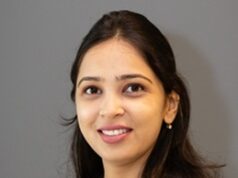
Dubai has become an unlikely oasis for the world’s design and construction industries. One of the seven United Arab Emirates, Dubai is situated in a desert where the temperatures commonly soar past 100 degrees and the humidity is not far behind. Until recently, concrete has been the building material of choice. It doesn’t sound like a picture postcard playground but, as they say, that was then, this is now.
Today, Dubai boasts the largest construction growth in the world, escalating at a rate of 35 percent a year. The landscape includes such worldwide distinctions as the two tallest hotels (Burj Al Arab and the Rose Tower), the largest artificial island complexes, the first rotating skyscraper, the largest theme park (Dubailand, scheduled to open in 2009), and the biggest ski dome. An underwater hotel is also in the works. Shopping malls in Dubai dwarf the Mall of America, with 8- and 12-million square-foot retail centers currently under construction.

More than 1,000 buildings currently under construction will have 40 or more floors. Sixteen percent of the world’s cranes are located in Dubai where they are needed to keep up with the rising skyline. When you are surrounded by desert, the only choice for expansion is either up or down.
LEED-Related Mandate
With all of this construction, you might expect that sustainability is being overshadowed by innovation, but the two concepts are working well together. Sheikh Mohammed bin Rashid Al Maktoum, Dubai’s leader and Vice-President and Prime Minister of the UAE, issued a mandate that all new construction in the Dubai World Developments must comply with 32 points within the U.S. Green Building Councils’ LEED (Leadership in Energy & Environmental Design) certification building standards—the most stringent requirements. The commitment to sustainable growth demonstrated the Sheikh’s commitment to a healthy, environmentally friendly city.
The “Green Decree” shows the world that Dubai is more than just a pretty façade. But living up to this desirable standard has proven to be challenging. The developers in Dubai, often unfamiliar with the requirements that were established by the U.S. Green Building Council, are unsure as to how to specify their projects. They need direction and education in the fundamentals of sustainable design and engineering. With the almost frenzied construction pace in Dubai, there is no time for a gradual learning process. In addition, we’re dealing with a locale that lacks the infrastructure to support and guide sustainable growth. For example, until recently, there was only one consultancy in Dubai that was qualified by the Environment, Health and Safety Department (EHS) for certifying projects, creating a bottleneck in the system.
We’ve also had to resolve the problem of the lack of skilled labor and the unfamiliarity with westernized construction practices. Having been accustomed to concrete structures, the concept of working with steel and glass requires training in a more complex engineering technology. In addition, there is no manufacturing industry in Dubai so materials are imported, which drives up the bottom line cost.
Learning from Each Other
Dubai has the appearance of a modern metropolis, but less than 20 years ago, it was a sparsely populated spot in the desert. Such growth does not occur without growing pains. While officials, developers, and builders scale the learning curve in order to comply with the government’s “Green Decree”, we have the opportunity to be both teacher and student. We can educate the Dubai AIE community on western construction methodology and the latest advances in sustainable design and engineering. At the same time, we can learn a thing or two about innovation based on need.
Dubai is a country with precious few natural resources. Water is in short supply but solar heat is plentiful. We are exploring the transfer of energy with mechanical systems to take advantage of that solar gain, an opportunity that doesn’t present itself as readily in a more temperate climate. Solar energy will be a far greater and easier strategy to implement in Dubai.
Secondly, Dubai has large-scale secondary wastewater systems. Water is a precious commodity so gray water is not wasted, a sustainable concept that the western cultures need to explore more carefully for their own use. With billions being spent on wastewater treatment plants in the UAE, the country is also investing heavily in desalination. So, while we are pioneering sustainability practices in Dubai, we expect to bring back advances in other technologies to the United States so that we can continue to live, work, and build green.
John Larsen, AIA, is Managing Partner/Retail Practice Group Leader with Cubellis. Based in the Baltimore, Md., office, he leads the firm’s Retail Practice Group across Cubellis’ domestic offices and the Dubai, U.A.E. office of Cubellis Costa International. Steven Leone, AIA, LEED AP, is a Principal with Cubellis and the firm’s Director of Sustainable Design. Based in the Freehold, N.J., office, Steve’s responsibilities include business development, client relations, architectural design, and sustainable design.







